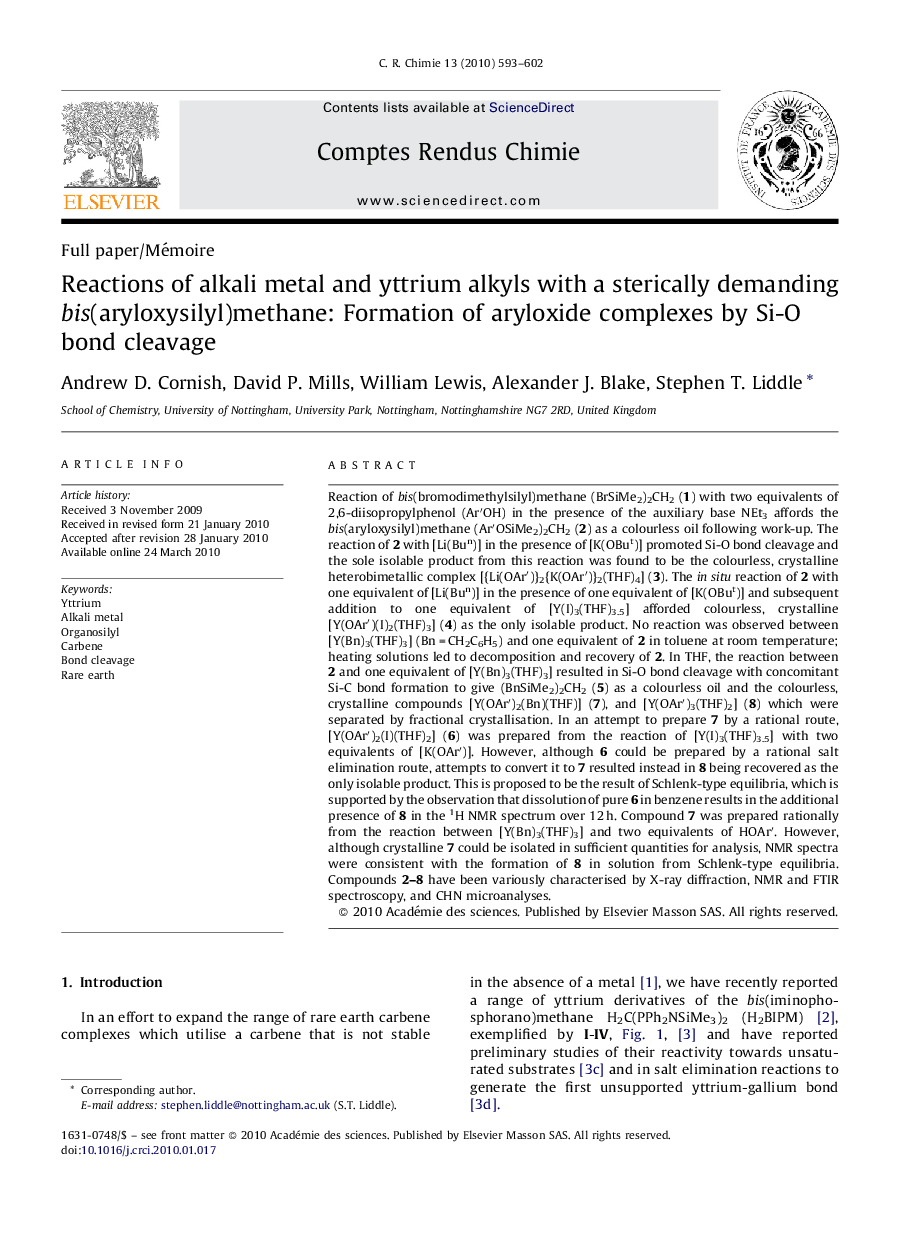| Article ID | Journal | Published Year | Pages | File Type |
|---|---|---|---|---|
| 171172 | Comptes Rendus Chimie | 2010 | 10 Pages |
Reaction of bis(bromodimethylsilyl)methane (BrSiMe2)2CH2 (1) with two equivalents of 2,6-diisopropylphenol (Ar′OH) in the presence of the auxiliary base NEt3 affords the bis(aryloxysilyl)methane (Ar′OSiMe2)2CH2 (2) as a colourless oil following work-up. The reaction of 2 with [Li(Bun)] in the presence of [K(OBut)] promoted Si-O bond cleavage and the sole isolable product from this reaction was found to be the colourless, crystalline heterobimetallic complex [{Li(OAr′)}2{K(OAr′)}2(THF)4] (3). The in situ reaction of 2 with one equivalent of [Li(Bun)] in the presence of one equivalent of [K(OBut)] and subsequent addition to one equivalent of [Y(I)3(THF)3.5] afforded colourless, crystalline [Y(OAr′)(I)2(THF)3] (4) as the only isolable product. No reaction was observed between [Y(Bn)3(THF)3] (Bn = CH2C6H5) and one equivalent of 2 in toluene at room temperature; heating solutions led to decomposition and recovery of 2. In THF, the reaction between 2 and one equivalent of [Y(Bn)3(THF)3] resulted in Si-O bond cleavage with concomitant Si-C bond formation to give (BnSiMe2)2CH2 (5) as a colourless oil and the colourless, crystalline compounds [Y(OAr′)2(Bn)(THF)] (7), and [Y(OAr′)3(THF)2] (8) which were separated by fractional crystallisation. In an attempt to prepare 7 by a rational route, [Y(OAr′)2(I)(THF)2] (6) was prepared from the reaction of [Y(I)3(THF)3.5] with two equivalents of [K(OAr′)]. However, although 6 could be prepared by a rational salt elimination route, attempts to convert it to 7 resulted instead in 8 being recovered as the only isolable product. This is proposed to be the result of Schlenk-type equilibria, which is supported by the observation that dissolution of pure 6 in benzene results in the additional presence of 8 in the 1H NMR spectrum over 12 h. Compound 7 was prepared rationally from the reaction between [Y(Bn)3(THF)3] and two equivalents of HOAr′. However, although crystalline 7 could be isolated in sufficient quantities for analysis, NMR spectra were consistent with the formation of 8 in solution from Schlenk-type equilibria. Compounds 2–8 have been variously characterised by X-ray diffraction, NMR and FTIR spectroscopy, and CHN microanalyses.
